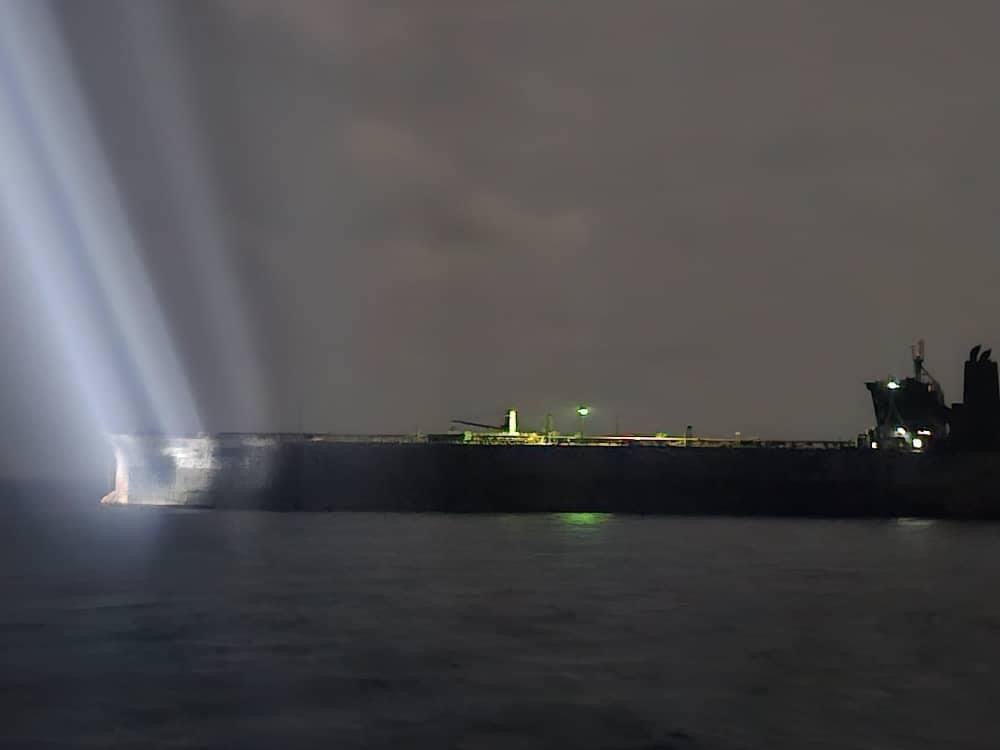By Florence Tan and Rozanna Latiff
SINGAPORE, July 22 (Reuters) – A tanker that fled the scene of a fiery Friday collision off Singapore entered the area of Malaysia’s Bertam floating oil terminal on Monday after being tracked down and intercepted by Malaysian authorities, shipping data from LSEG and Kpler showed.
The Sao Tome and Principe-flagged supertanker Ceres I had left the scene of the collision with the Singapore-flagged tanker Hafnia Nile about 55 km (35 miles) northeast of the Singaporean island of Pedra Branca without explanation.
The Ceres I, which was believed to have turned off its tracking system after the accident, was then found in Malaysian waters with two tugboats towing it, Malaysia’s coast guard said.
Industry experts say the Ceres I is known to have carried Iranian oil in the past, and LSEG and Kpler data showed the supertanker discharged Iranian crude via ship-to-ship transfers in Malaysia’s Linggi transhipment hub in April.
However, AIS data on LSEG indicated that the Ceres I, a very large crude carrier (VLCC) capable of carrying around 2 million barrels of oil, was empty at the time of the collision.
Ship-to-ship transfers are often used to mask the origins of sanctioned oil.
Aerial surveys of the scene found minor traces of an oil spill.
“For further action, the two tankers involved will be towed to a safe location to enable further investigation and the cause of the incident will be investigated by the marine department,” Kama Azri Kamil, acting maritime director of Johor state, said in a statement, without saying where the ships would be taken.
The exact circumstances leading to the incident are unknown.
All 26 crew members who had remained aboard the Ceres I to fight fires are safe, he added. Fourteen crew previously evacuated from the Ceres I and the Hafnia Nile’s 22 crew were safe in Singapore.
The Bertam terminal is located in the South China Sea off the east coast of Peninsular Malaysia.
Shanghai Prosperity Ship Management is the manager of the Ceres I, according to LSEG data. It could not immediately be reached for comment.
Hafnia, the manager of Hafnia Nile, has said it is in discussions with Malaysian authorities to move its vessel.
The Hafnia Nile, a Panamax tanker, was carrying about 300,000 barrels of naphtha for Japan, according to ship-tracking data from Kpler and LSEG. Naphtha is a raw material for making petrochemicals.
Singapore is Asia’s biggest oil-trading hub and the world’s largest bunkering port. Its waters are among the busiest sea lanes in the world.
(Reporting by Florence Tan, Jeslyn Lerh and Chen Aizhu in Singapore, Rozanna Latiff in Kuala Lumpur; Editing by Christopher Cushing, Christian Schmollinger, Lincoln Feast and Kevin Liffey)
(c) Copyright Thomson Reuters 2024.

 Join The Club
Join The Club












